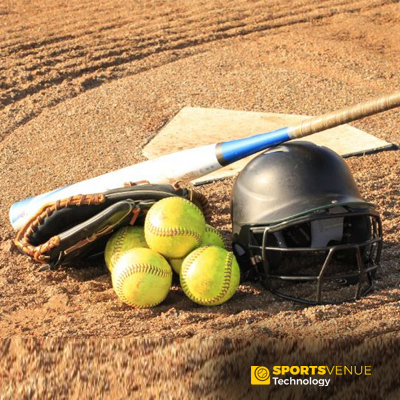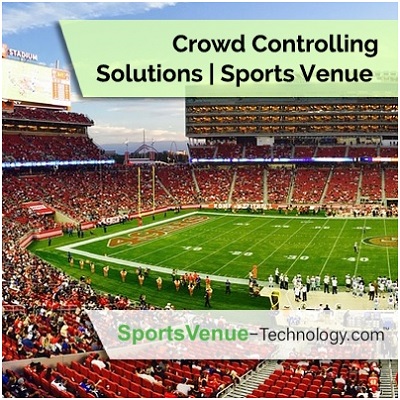Essential Gear for Sports Grounds: A Guide to Sports Ground Equipment

Introduction:
In the world of sports, having the right equipment is crucial for maintaining high-quality grounds that ensure player safety and optimal performance. This guide delves into the essential gear required for sports grounds, covering equipment, maintenance practices, safety measures, and efficiency tips.
1. Field Marking Equipment:
Field marking equipment plays a pivotal role in sports fields by ensuring clear and accurate demarcations of boundaries, lines, and zones. Line striping machines are indispensable tools that efficiently apply paints and chalks onto the field surface, creating distinct lines that are essential for various sports activities. These machines offer precision and consistency, resulting in professional-looking markings that enhance the overall aesthetics and functionality of the sports field.
In addition to line striping machines, stencils play a crucial role in adding logos, team emblems, and specific markings to the field. Stencils allow for intricate designs and precise placement of graphics, contributing to the identity and branding of the sports facility. Whether it's marking the center circle of a soccer field, the three-point line on a basketball court, or the service lines on a tennis court, stencils ensure uniformity and clarity in the field markings.
Moreover, the choice of paints and chalks is essential in field marking equipment. High-quality paints and chalks are durable, weather-resistant, and offer excellent visibility, even under varying lighting conditions. They come in a range of colors to accommodate different sports requirements and preferences, further enhancing the visibility and professionalism of the field markings.
Overall, field marking equipment, including line striping machines, paints, chalks, and stencils, plays a vital role in creating well-defined and visually appealing sports fields. These tools not only contribute to the safety and efficiency of gameplay but also contribute to the overall experience of athletes, spectators, and organizers in a sports environment.
2. Groundskeeping Tools:
Proper maintenance is essential for ensuring the longevity and optimal performance of sports grounds. This involves the use of various groundskeeping tools designed specifically for maintaining the turf and overall condition of the field.
Mowers and turf equipment are indispensable tools for keeping the grass at the desired length and ensuring a uniform playing surface. These machines come in different types, including reel mowers for precision cutting and rotary mowers for larger areas, providing flexibility in maintaining different parts of the field.
Irrigation systems play a crucial role in keeping the turf healthy and hydrated, especially during dry spells or hot weather. Modern irrigation systems for sports fields are designed for efficient water distribution, ensuring uniform coverage and minimizing water wastage.
Aerators and dethatchers are essential for promoting healthy turf growth and root development.
Aerators create small holes in the soil, allowing air, water, and nutrients to penetrate deep into the roots. Dethatchers, on the other hand, remove accumulated thatch (dead grass and debris) from the surface, preventing it from suffocating the turf and inhibiting growth.
These groundskeeping tools, including mowers, irrigation systems, aerators, and dethatchers, are indispensable for maintaining sports grounds in optimal condition. Incorporating proper maintenance practices and using the right tools contribute significantly to the safety, playability, and aesthetic appeal of sports fields, ensuring a positive experience for athletes and spectators alike.
3. Safety Equipment:
Ensuring the safety of players and spectators is of utmost importance in sports facilities. Essential safety equipment plays a crucial role in minimizing risks and providing a secure environment for everyone involved.
Padding for goalposts and other structures is vital for preventing injuries during collisions or accidental contact. It cushions the impact and reduces the severity of injuries, especially in fast-paced sports where players may come into contact with fixed structures. Safety netting for spectator areas serves as a protective barrier, preventing objects such as balls or equipment from entering the spectator zones. This not only ensures the safety of spectators but also maintains an uninterrupted viewing experience without potential hazards.
First aid kits and emergency response equipment are indispensable in handling injuries or medical emergencies promptly. These kits contain essential supplies such as bandages, antiseptics, ice packs, and medical tools, enabling immediate response to injuries until professional medical help arrives.
By incorporating padding for structures, safety netting for spectator areas, and maintaining well-equipped first aid kits and emergency response equipment, sports facilities demonstrate a commitment to prioritizing safety. These safety measures not only mitigate risks but also instill confidence among players, officials, and spectators, fostering a positive and secure environment for sporting events.
4. Lighting Systems:
Proper lighting is essential for sports facilities hosting evening games or indoor events, ensuring visibility, safety, and optimal performance. Several considerations come into play when designing effective lighting systems for sports fields.
LED floodlights are highly recommended for their ability to provide uniform illumination across the entire playing area. They offer bright, energy-efficient lighting that enhances visibility for players, officials, and spectators, creating an optimal environment for competitive sports activities. Programmable lighting systems add another layer of efficiency by allowing facilities to adjust light levels based on specific needs. This not only saves energy but also ensures that lighting conditions meet regulatory requirements and enhance the viewing experience for audiences.
Emergency lighting is a critical component of sports field lighting systems, providing backup illumination during power outages or emergencies. These lights ensure continuity of play and safety for everyone on the field, allowing activities to proceed seamlessly even in challenging circumstances.
By incorporating LED floodlights, programmable lighting systems, and reliable emergency lighting solutions, sports facilities can create a well-lit environment that supports evening games, indoor events, and emergency situations. These lighting systems not only enhance performance and safety but also contribute to the overall experience of participants and spectators alike.
5. Equipment Storage Solutions:
Organized storage solutions are essential for maintaining sports equipment in good condition and ensuring easy access when needed. There are several recommended storage options that can help keep sports gear organized and secure.
Equipment sheds or storage rooms provide ample space to store a variety of sports equipment, including balls, bats, helmets, and training gear. These sheds are typically designed with shelves, hooks, and compartments to keep items neatly arranged and easily accessible. Wall-mounted racks are ideal for storing balls and gear in a space-efficient manner. These racks can be installed in equipment rooms, locker rooms, or even along the perimeter of sports fields for convenient access during practices and games.
Lockable cabinets offer additional security for storing valuable equipment such as uniforms, electronics, or personal belongings. These cabinets come with sturdy locks to prevent unauthorized access and ensure the safety of valuable items.
By utilizing equipment sheds or storage rooms, wall-mounted racks, and lockable cabinets, sports facilities can maintain an organized storage system that protects equipment from damage, loss, or theft. These storage solutions not only improve operational efficiency but also contribute to the longevity and functionality of sports equipment, ensuring a smooth and hassle-free experience for athletes and staff.
6. Grounds Maintenance Services:
Professional grounds maintenance services play a crucial role in ensuring the optimal condition of sports grounds by handling complex maintenance tasks effectively. These services encompass a range of essential activities that contribute to the overall health and appearance of the turf.
Turf management and fertilization are core components of grounds maintenance services, focusing on promoting healthy turf growth, resilience, and durability. This includes regular mowing, aerating, overseeding, and applying fertilizers to provide essential nutrients for turf health. Pest control and weed management are critical aspects of maintaining a pest-free and aesthetically pleasing sports field. Professional services employ strategies such as integrated pest management (IPM) to control pests and weeds effectively while minimizing environmental impact.
Seasonal preparation and renovation are key services provided by grounds maintenance professionals to prepare sports fields for changing seasons and heavy usage. This may involve soil testing, turf renovation, irrigation adjustments, and implementing preventive measures against seasonal challenges.
By engaging sports grounds maintenance services, facilities can ensure that their grounds receive expert care and attention, leading to improved playability, safety, and visual appeal. These services, which include turf management, fertilization, pest control, and seasonal preparation, play a vital role in maintaining high-quality sports fields that meet the standards of players, coaches, and spectators.
Conclusion:
Investing in the right gear and maintenance practices is essential for sports grounds' success. By using the equipment and following safety and maintenance guidelines, sports facilities can provide a safe and enjoyable experience for players and spectators alike.





